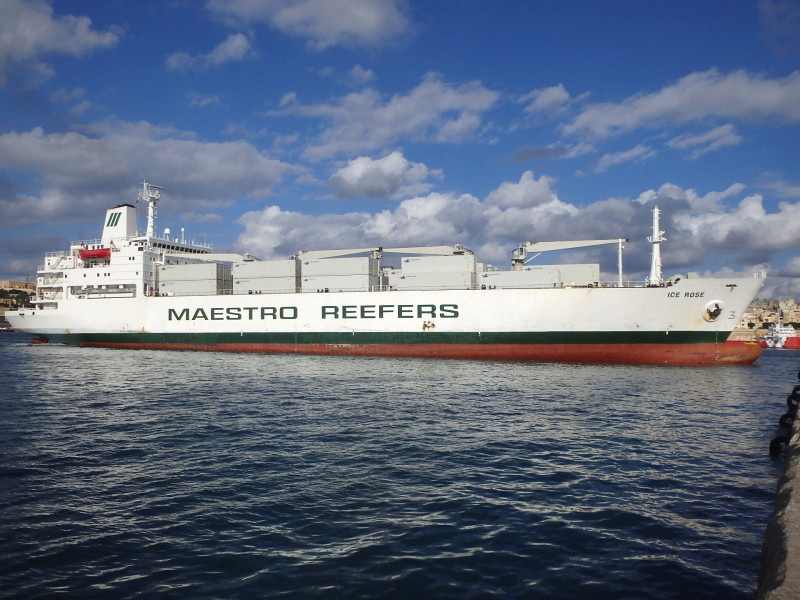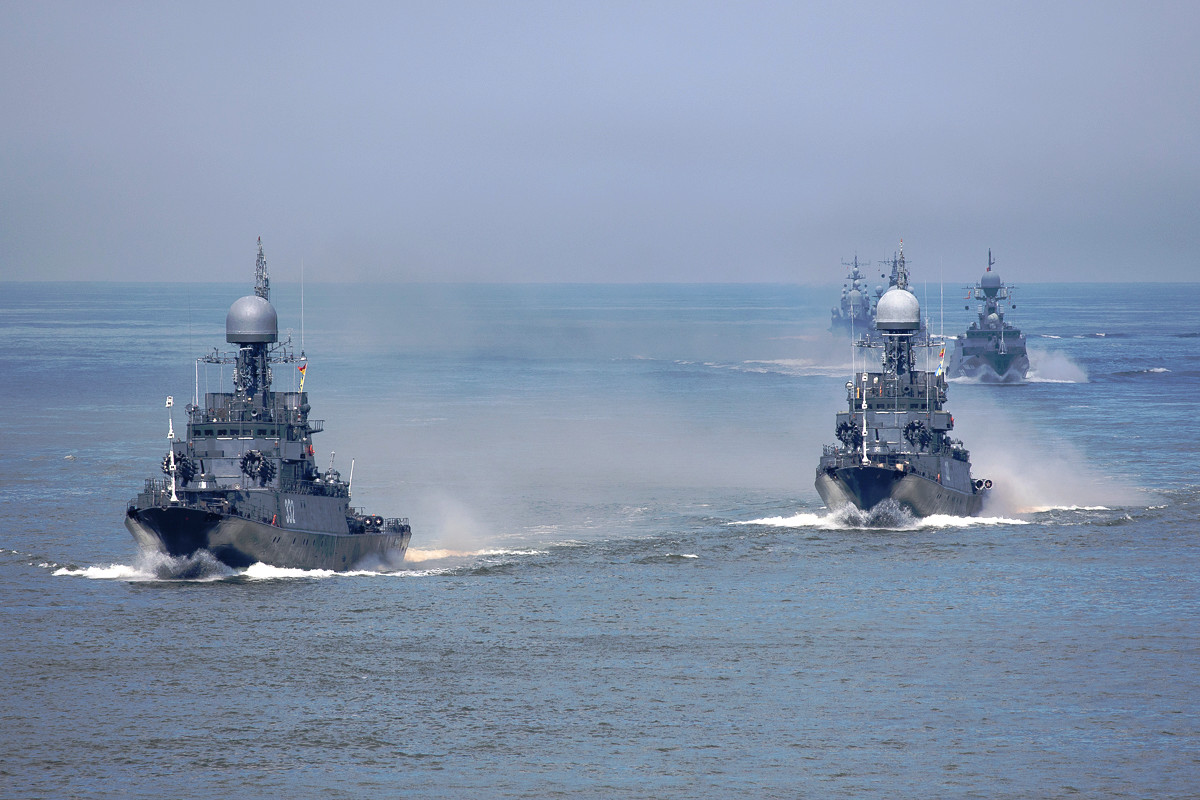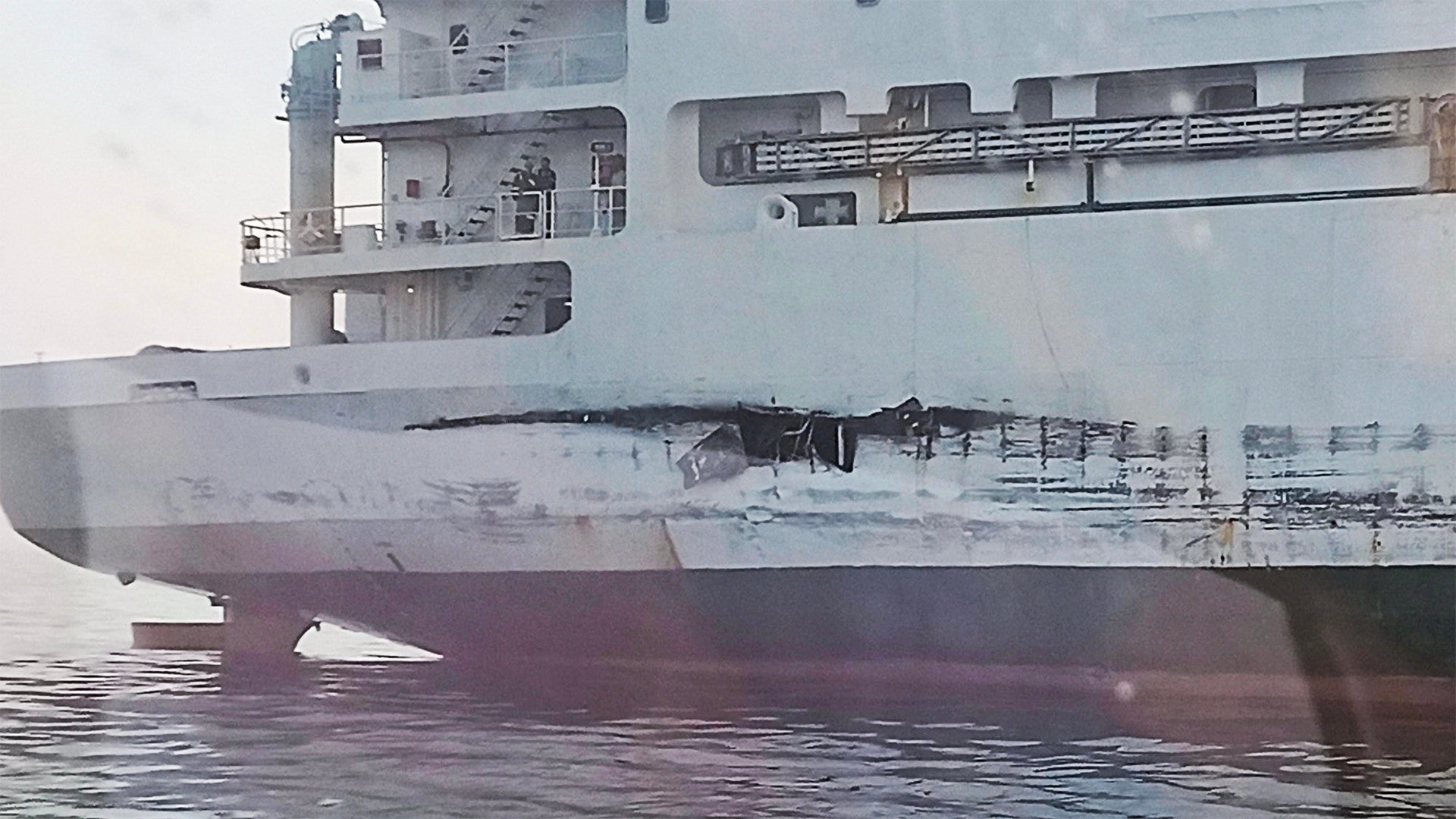A Russian Navy warship has now left Danish waters after colliding with a civilian cargo ship in the Baltic Sea. The mishap involved the Parchim-class corvette Kazanets and the Swiss-owned cargo ship Ice Rose, which is registered in the Marshall Islands.
The collision occurred yesterday, September 23, 2020, south of the five-mile Øresund Bridge that spans the strait between Denmark and Sweden. The Danish Armed Forces, or Forsvaret, announced the following day that the Kazanets had left the area and provided a photo of the damage to the Ice Rose, which subsequently headed north toward the Danish port of Odense. A large gash has been torn on the vessel’s starboard side, towards the stern, penetrating the hull above the waterline.
With an 800-ton displacement and a length of just over 236 feet, the Kazanets is dwarfed by the Ice Rose, which is over 475 feet long and which has a cargo capacity of 14,567 tons.


The collision between the corvette and the refrigerated cargo ship took place in what the Danish Armed Forces Operations Center described as “very dense fog.” There were no reported injuries to those on board either vessel, the center reported.
The Danish Armed Forces confirmed that no spillages of fuel oil or other pollutants had been detected after the collision. The case has now been handed over to Denmark’s civilian authorities.
Soon after the incident, the Royal Danish Navy patrol ship Najaden (P523) arrived on the scene, as did the Swedish Coast Guard vessel Kbv 432, to assess the situation and take part in search and rescue efforts if required.
The Ice Rose had departed St. Petersburg in Russia on September 21 and was headed to Gothenburg in Sweden. Following the collision, the cargo ship will be assessed by the Danish authorities to determine if it is still seaworthy.

According to the Maritime Bulletin website, the hull of the Kazanets was also breached above the waterline and after the collision, it proceeded toward the naval base at Baltiysk, in Russia’s Kaliningrad exclave.
The Kazanets is one of six Cold War-era Parchim-class warships that remain in Russian Navy service. These vessels were built in what was then East Germany for the Soviet Navy and were primarily intended for coastal anti-submarine warfare. As originally completed, these vessels were armed with a single 76-mm caliber gun, one six-barrel 30-mm gun, two twin 533-mm torpedo tubes, two 12-round RBU-6000 anti-submarine rocket launchers, and two quadruple launchers for Strela-2 or Strela-3M surface-to-air missiles.

Unconfirmed reports suggest the Kazanets was operating with its Automatic Identification System (AIS) transmitter switched off. The AIS is a tracking system that provides ships with a picture of marine traffic in the area to help prevent collisions. However, the Kazanets was permitted to operate in Danish territorial waters and had notified the Danish authorities of its presence.
The same day as the collision near the Øresund Bridge it emerged that Sweden had lodged a protest with Moscow after “two Russian corvettes which entered territorial waters near Gothenburg” without permission. The incident in question occurred on September 14. Two days later, a Danish military vessel also entered Swedish territorial waters without permission.
A resurgent Russian military presence in the region means the Baltic Sea is of considerable strategic importance. The already busy waters — around 2,000 ships are underway in the Baltic marine area at any one time — are also regularly patrolled by Russian and NATO warships, as well as those from non-aligned Finland and Sweden. These frequently have to negotiate narrow straits and shallow waters.
In the air, Russian military aircraft are regularly intercepted by NATO’s Baltic Air Policing (BAP) mission, operating from bases in Lithuania and Estonia to protect the Baltic States. Denmark had a recent close encounter with one Russian aircraft when a Su-27 Flanker fighter jet violated its airspace over the island of Bornholm while chasing a U.S. Air Force B-52H Stratofortress bomber.
While it is not uncommon for Russian military aircraft to operate over the Baltic with their transponders switched off, the collision in the waters south of the Øresund Bridge suggests that the Kazanets may have similarly failed to identify itself.
Contact the author: thomas@thedrive.com
